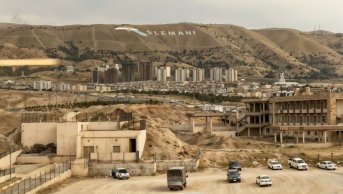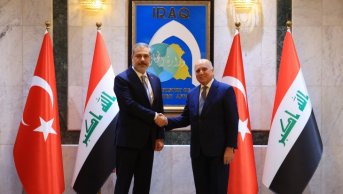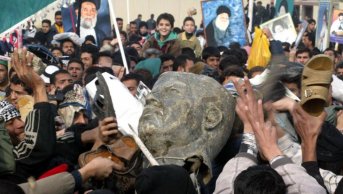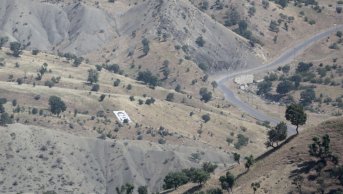How will the death of Grand Ayatollah Muhammed Saeed al-Hakim affect the Shiite world?
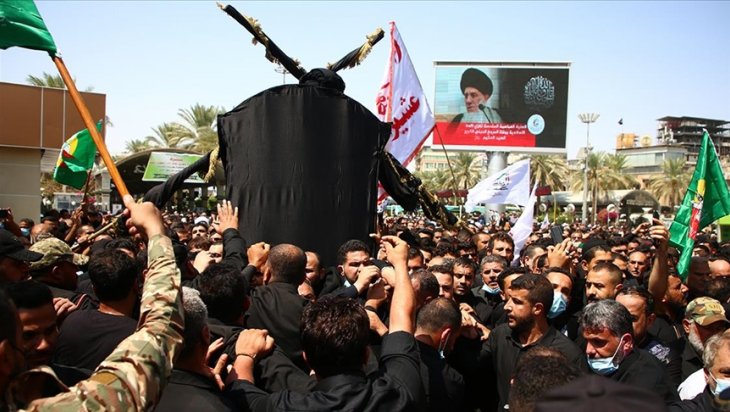
Grand Ayatollah Sayyid Muhammad Saeed Al-Hakim, one of the four major Shiite authorities in Iraq, died in Najaf at the age of 85 due to a heart attack. The death of al-Hakim created a major social and religious vacuum for both Iraq and the Shiite world and brought up past discussions on the Shiite systematics once again. Even though it is impossible to estimate the distribution of the Muslim population according to population and sects, there is a considerable adherence to the Shiite sect among Muslims. In addition to Iran, which is the country with the most Shiite population, more than half of the people in Iraq belong to the Shiite sect. However, even the slightest development regarding the Shiite world echoes in Iraq due to the fact that Shiism originates from Qufa, Najaf and that most of the Shiite holy sites are located in Iraqi lands, and more importantly, Najaf is the main training center of the Shiite doctrine. In this context, the death of the Great Ayatollah al-Hakim may have important consequences for both Iraq and the Shiite world.
The Shiite Systematics and Najaf
The word Shiite or Shia literally means "follower/adherent". For this reason, the Shiites can be defined as people who attribute the title of Caliph to the lineage and descendants of Prophet Muhammad, and follow the teachings of Ahl al-Bait. In simple terms, it is possible to say that the Shiite sect emerged when those who believed that Ali should be the first caliphate after the death of Muhammad acted in line with Ali's teachings. In this context, the most essential characteristic that distinguishes Shiism from other sects is the issue of imitation. According to Shiism, apart from the definite rules of the religion, a Muslim must either be a mujtahid (having the authority to give fatwa by completing the Shiite religious education) and be able to deduce the religious rulings from the evidence or imitate a mujtahid. That is, he must act according to his orders or maintain his daily life and act with prudence in a way that he can be sure about fulfilling his duty. For this reason, the people who have reached the level of giving fatwa are highly revered in the Shiite faith, and these people can direct all areas of life.
Shiism became an influential force in politics and state administration with the introduction of the concept of “Wilayat al-Faqih” by Khomeini in Iran in 1979. This was because this approach has placed the clergy at the top of the administrative structure as the main decision-maker. However, divisions emerged within Shiism when this practice transformed into a form of state administration for Iran. In addition, Iraqi Shiism turned inwards with the rise of the Baath Party first and then with the outbreak of the Iraq-Iran war between 1980 and 1988 that triggered government crackdown. During the period mentioned above, a majority of the Shiite religious scholars in Najaf had to go to the Qom Hawza, the center of the Shiite religious education in Iran. For this reason, the Qom Hawza arguably became the most effective power in Shiism for a long time.
However, after the US invasion of Iraq in 2003, the Najaf Hawza has recovered or is trying to recuperate as the Shiites, who constitute the majority of the population in Iraq, became the dominant power in Iraq. In this context, there is a natural rivalry between the Najaf and Qom hawzas. In particular, Najaf Shiism has a more traditional attitude (the clergy staying away from politics is one example), far from the understanding of Wilayat al-Faqih. Although the developments in Iraq tend to force Najaf into politics, the Shiite religious authority in Najaf is trying to refrain from doing so. Despite this, the fact that the Shiite adherents act according to the discourses of the clergy is effective in the state administration and political processes in Iraq. As a matter of fact, the role of the Shiite religious authority in Najaf was clearly seen both in the government formation processes and in the protest in 2019. That is why, Shiite authority is one of the issues that is constantly on the agenda.
There were four major Shiite religious authorities in Iraq that were acknowledged by all Iraqis. These are Ayatollah Ali al-Sistani, who is seen as the leading Shiite religious authority in Iraq and is the highest authority of the Najaf Hawza, Ayatollah Muhammad Saeed al-Hakim who has died recently, Ayatollah Ishak Feyyad, and Ayatollah Bashir al-Najafi. These clerics are seen by Shiites as "Great Ayatollah - Ayatollah al-Uzma". Apart from this quartet, there are more than 20 clergymen who have risen to the level of Ayatollah. In other words, these people can issue fatwas. Yet, they are far behind the aforementioned quartet in terms of knowledge, experience and number of adherents. On the other hand, the Najaf religious education hawza is under the leadership of the preeminent Shiite religious authority, Ayatollah Ali al-Sistani. However, other great Ayatollahs also have a say here. Still, the fact that the administration is in the hands of al-Sistani is important for the views to emerge from the hawza.
Grand Ayatollah Sayyid Muhammad Saeed al-Hakim and Authority Debates
The period after Ayatollah al-Sistani, who is considered the principal Shiite religious authority in Iraq, is one of the hottest debate topics in Iraq among Shiites. That is because Ayatollah al-Sistani is very old and has chronic diseases. Rumors emerge at times that he is dead and his death is hidden from the public eye. As a matter of fact, Ayatollah al-Hakim was deemed as one of the most important candidates for the leadership of the Najaf Hawza after al-Sistani. That is because rest of the top candidates to replace al-Sistani, Ayatollahs Fayyad and Najafi, have chronic illnesses, are not of Iraqi origin, and are not Sayyids (descendants of the Prophet Muhammad). Al-Hakim’s preeminence of knowledge and science in general also propelled him as the strongest candidate after Sistani. In addition, al-Hakim had other advantages such as his family background, – Al-Hakim hailed from one of the two largest Shiite ulama families (al-Hakim and Sadr families) in Iraq – his identity as “sayyid" among the great Ayatollahs except al-Sistani, and his family’s strong emphasis on Iraqi identity. Furthermore, he has a special place in the eyes of the Iraqi people due to his arrest and imprisonment by Saddam Hussein from 1983 to 1991 and his refusal to leave Najaf despite Saddam's pressure.
On the other hand, his most important characteristics that distinguish him from the other Ayatollahs are his hands-off approach to politics, his emphasis on Iraqi identity and his clear attitude towards Wilayat al-Faqih. In this context, the death of al-Hakim will create a great void for Najaf, the Shiite world and Iraq. Although there are others in the family who can take his place, it will not be easy to fill the vacuum left by al-Hakim. That is because his family is important for Iraqi politics and religion. Ammar al-Hakim is a successor of his father Abdulaziz al-Hakim, one of the main actors of post-2003 Iraqi politics. Although Ayatollah al-Hakim used to stay away from politics, his close kinship relations made his family politically strong in Iraq.
However, the main issue here is not about how to fill the gap in al-Hakim family, but who will come to the fore with the death of al-Hakim for the post-Sistani period. Recently, Muhammad Reza al-Sistani, son of Ayatollah Ali al-Sistani, has become more visible and prepared himself for the post-Sistani period. He is known to have established close relations with the Imam al-Hui Foundation, which opened an institute in Najaf in 2017 and is based in London, the capital of England. Ayatollah Abu al-Qasim al-Hui was the leader of Najaf between 1970-1991 before Sistani. Al-Hui has a vast influence on the Najaf hawza. The Imam al-Hui Foundation also has a strong economic wealth. For this reason, Mohammed Reza al-Sistani prepared himself after his father, with the support of the al-Hui Foundation. It is also not possible to ignore the internal dynamics of the hawza. Even though there have been struggles from time to time, the hawza has its own criteria to determine the highest authority, and Najaf seeks to protect these values and criteria. However, the intense Iranian influence and pressure in Iraq after 2003 is also palpable in Najaf. In this context, there are rumors that Iran is preparing someone to take Ayatollah al-Sistani’s place. Although there are no clear ideas about whom Iran supports, it is clear that Iran will not stay away from this issue. Because recently, the Najaf hawza seems to have surpassed Qom with in terms of advocacy of traditional Shiism and the interest of world politics. Although the visit of Vatican leader Pope Francis has been the subject of criticism in some aspects, the fact that he met with Ayatollah al-Sistani in Najaf in March 2021 shows Najaf’s importance. At this point, it would not be wrong to say that the effects of al-Hakim's death will not be limited to al-Hakim family and Najaf only.
This article was published in Anadolu Agency website under the title of “How will the death of Grand Ayatollah Muhammed Saeed al-Hakim affect the Shiite world?” on September 9, 2021.

